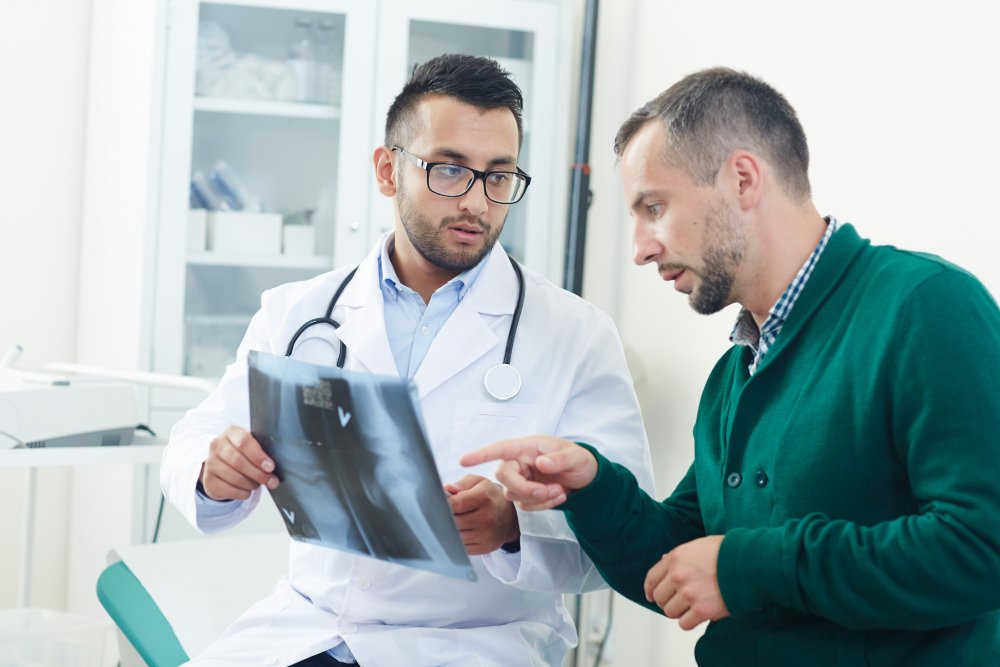Welcome to Our Orthopaedics Department
Orthopaedics is a medical specialty that focuses on the diagnosis, treatment, rehabilitation, and prevention of diseases and injuries of the musculoskeletal system. This system includes bones, joints, ligaments, muscles, tendons, and nerves. Orthopaedic surgeons, often referred to simply as orthopaedists, are specialized doctors trained to manage a wide array of conditions ranging from congenital disorders and degenerative diseases to sports injuries and trauma.

Scope of Services
The field of orthopaedics covers a broad spectrum of musculoskeletal issues, including but not limited to:
- Fractures and Dislocations: Treatment of broken bones and joints that have been displaced.
- Sports Injuries: Addressing injuries common in athletes, such as ACL tears, tennis elbow, and rotator cuff injuries.
- Degenerative Diseases: Management of conditions that worsen over time, such as osteoarthritis and degenerative disc disease.
- Congenital Disorders: Treatment of abnormalities present from birth, like clubfoot and congenital hip dysplasia.
- Musculoskeletal Trauma: Care for injuries resulting from accidents and violence, such as compound fractures and crush injuries.
- Spine Disorders: Diagnosis and treatment of spinal conditions, including scoliosis, herniated discs, and spinal stenosis.
- Cancer: Treatment of tumors within bones and other musculoskeletal tissues, including both benign and malignant varieties.
Treatment Approaches
- Non-Surgical Treatment: Many musculoskeletal issues can be managed without surgery. Treatment options include physical therapy, medications (such as pain relievers and anti-inflammatory drugs), injections (like corticosteroids or hyaluronic acid), and lifestyle modifications (including weight loss and exercise).
- Surgical Treatment: When non-surgical treatments are ineffective, surgery may be necessary. Common procedures include joint replacement (arthroplasty), repair of torn ligaments and tendons, spine surgery, and the setting and fixation of fractures.
Technological Advances
Orthopaedics is a field at the forefront of medical technology. Innovations include minimally invasive surgical techniques, such as arthroscopy, which allow for smaller incisions and faster recovery times. There’s also a growing use of robotic-assisted surgery, which can increase precision and improve outcomes in procedures like joint replacements. Advanced imaging techniques, including MRI and CT scans, provide detailed views of the musculoskeletal system, aiding in accurate diagnoses.
Rehabilitation and Physical Therapy
Rehabilitation is a critical component of orthopaedic care. Physical therapy plays a central role in helping patients recover from injuries and surgeries, aiming to restore function, decrease pain, and increase mobility. Rehabilitation programs are tailored to meet the individual needs of patients, often starting with basic exercises to regain strength and gradually progressing to more complex activities.
Preventative Care
Orthopaedists also focus on prevention strategies to minimize the risk of injuries and degenerative diseases. This includes promoting healthy lifestyles, workplace and sports safety, and early intervention for conditions like osteoporosis.
The Role of Orthopaedists
Orthopaedic surgeons not only perform surgeries but also serve as consultants in complex diagnostic cases. They work closely with other healthcare professionals, including primary care physicians, physical therapists, and occupational therapists, to provide comprehensive care. Orthopaedists often sub-specialize in areas such as sports medicine, pediatric orthopaedics, spine, hand, foot and ankle, and joint reconstruction, allowing for highly specialized care tailored to specific patient needs.
Conclusion
Orthopaedics is an essential field of medicine that significantly enhances the quality of life for individuals suffering from musculoskeletal issues. Through a combination of advanced surgical techniques, non-surgical treatments, and preventive care, orthopaedic surgeons help patients regain mobility and live fuller, more active lives. The continuous advancements in medical technology and treatment methods promise even greater improvements in patient care and outcomes in the future.
